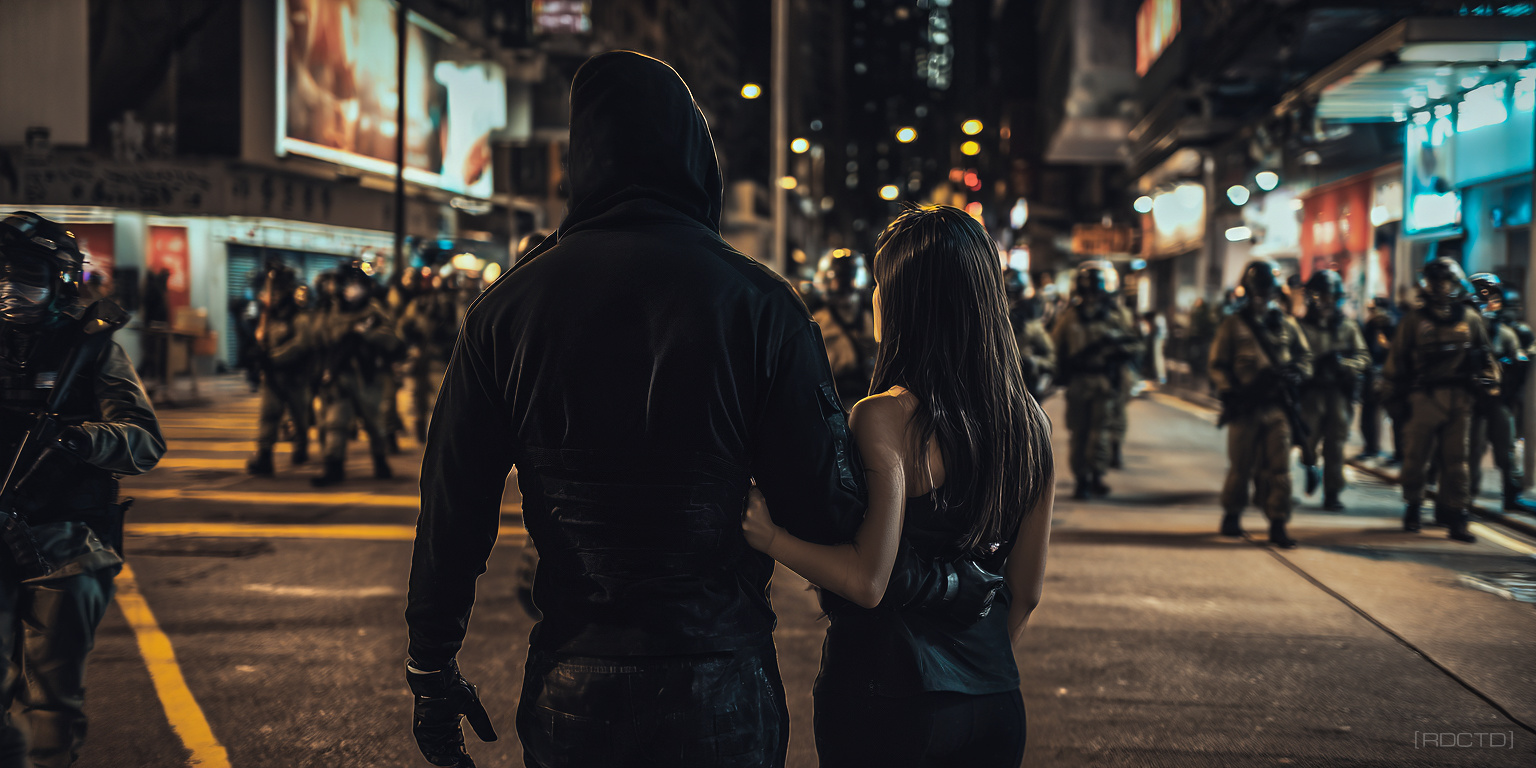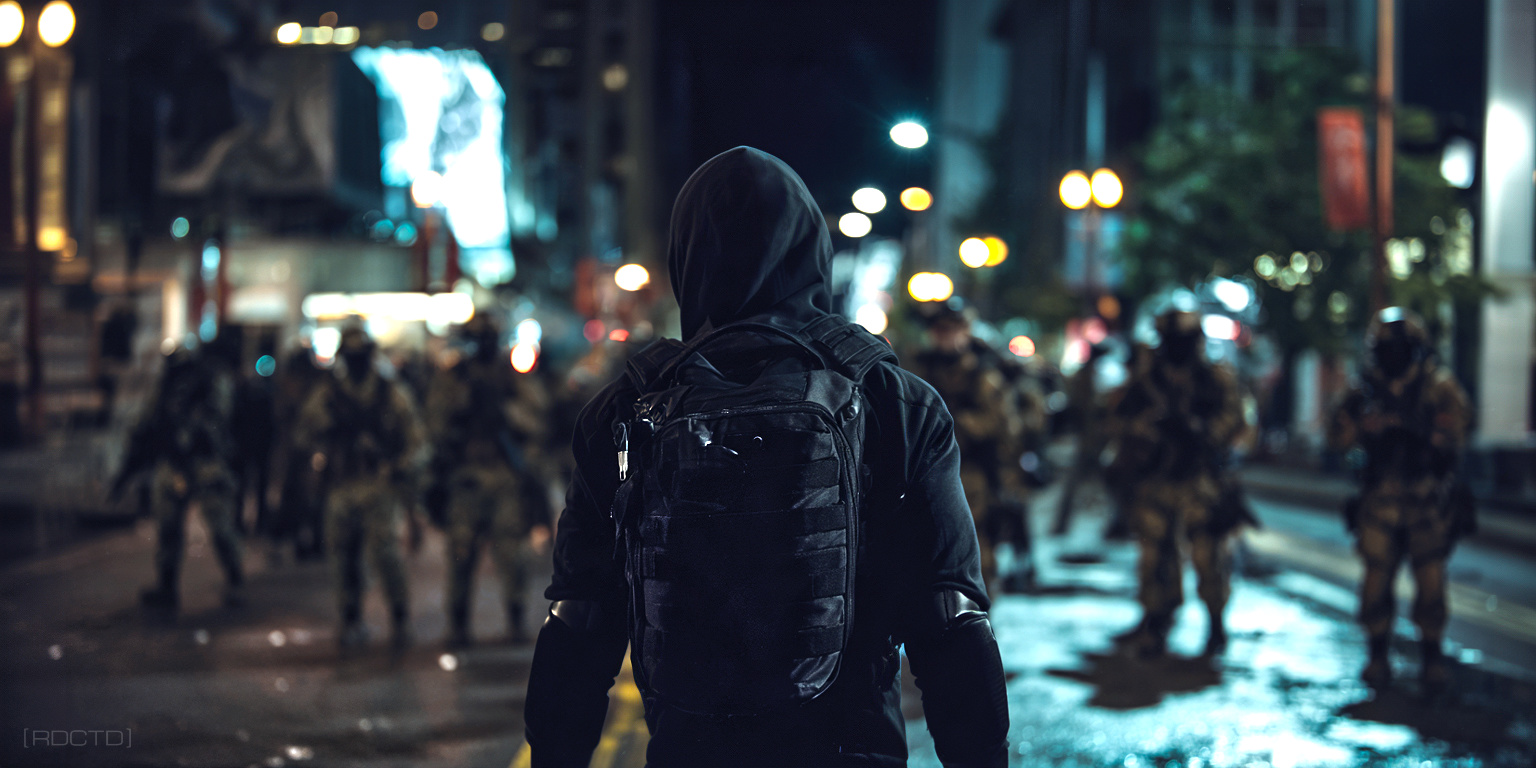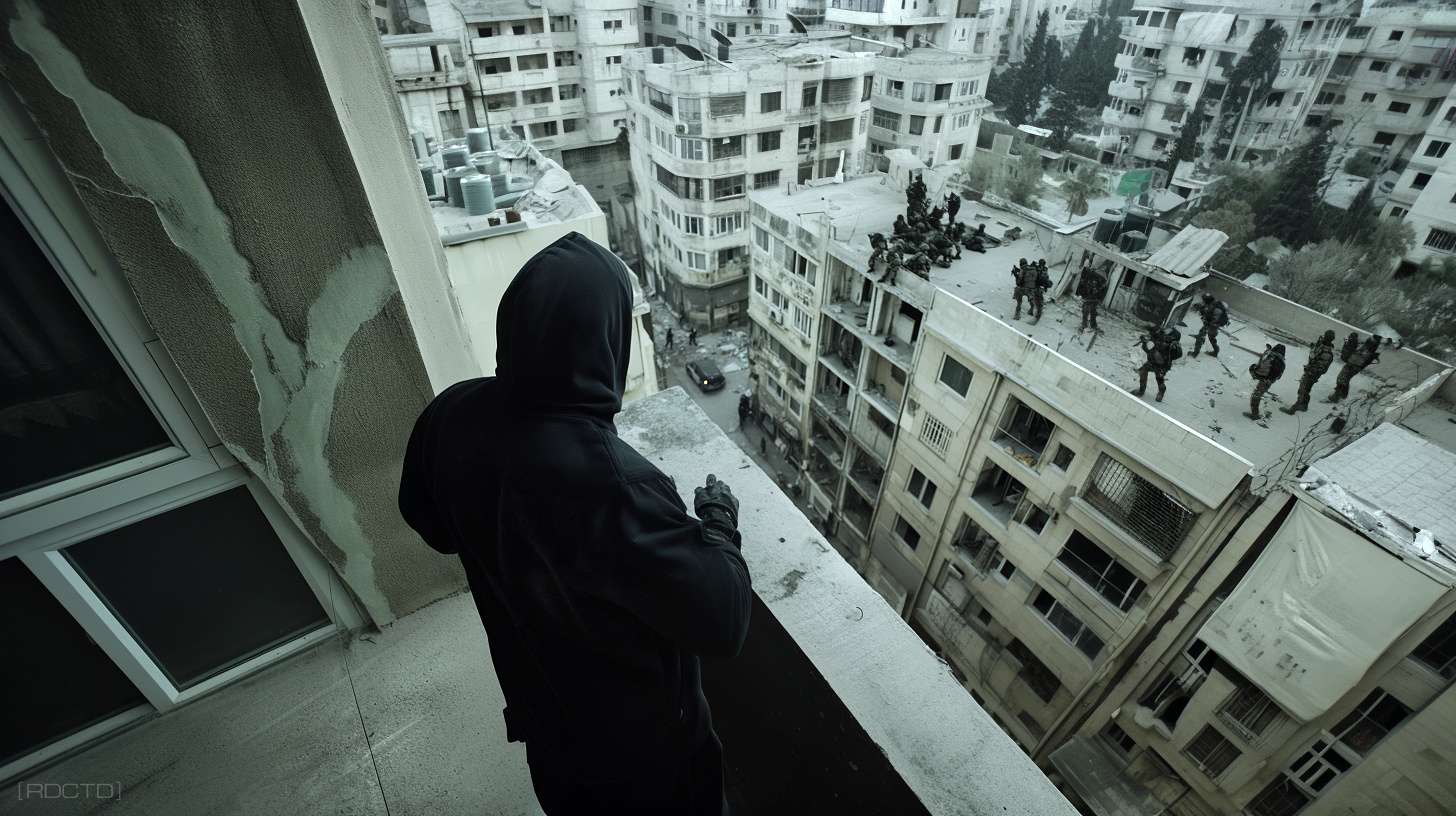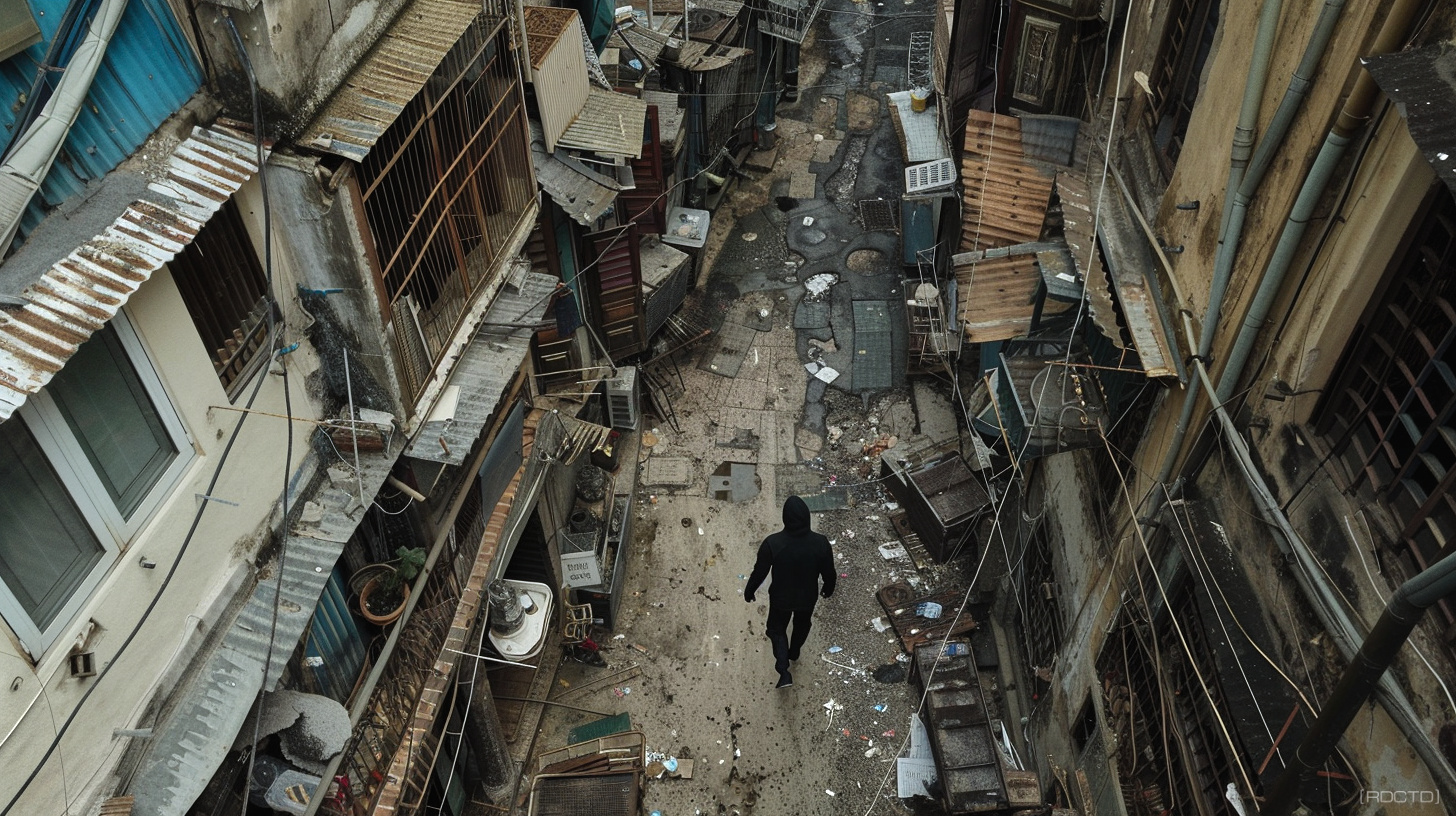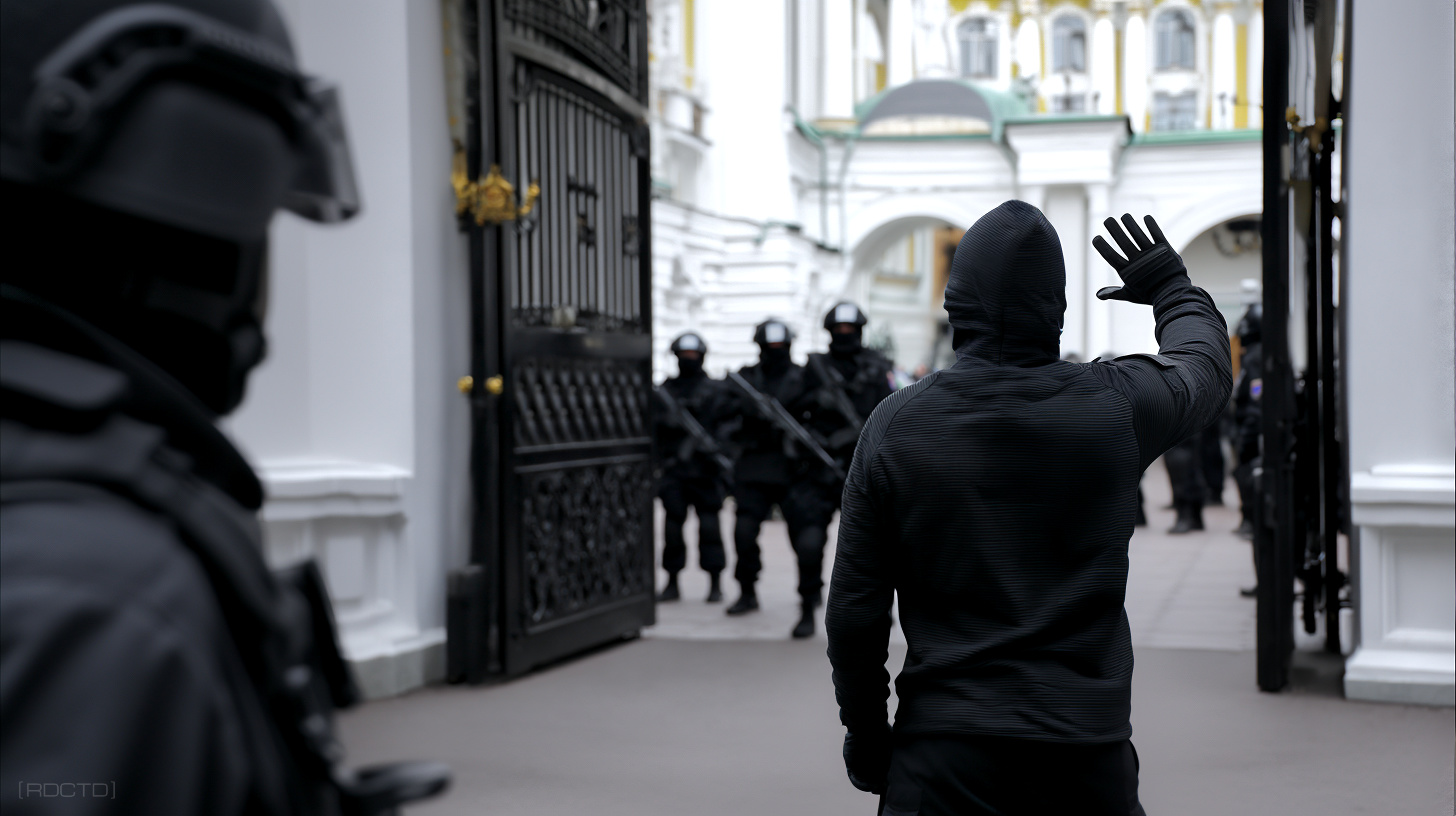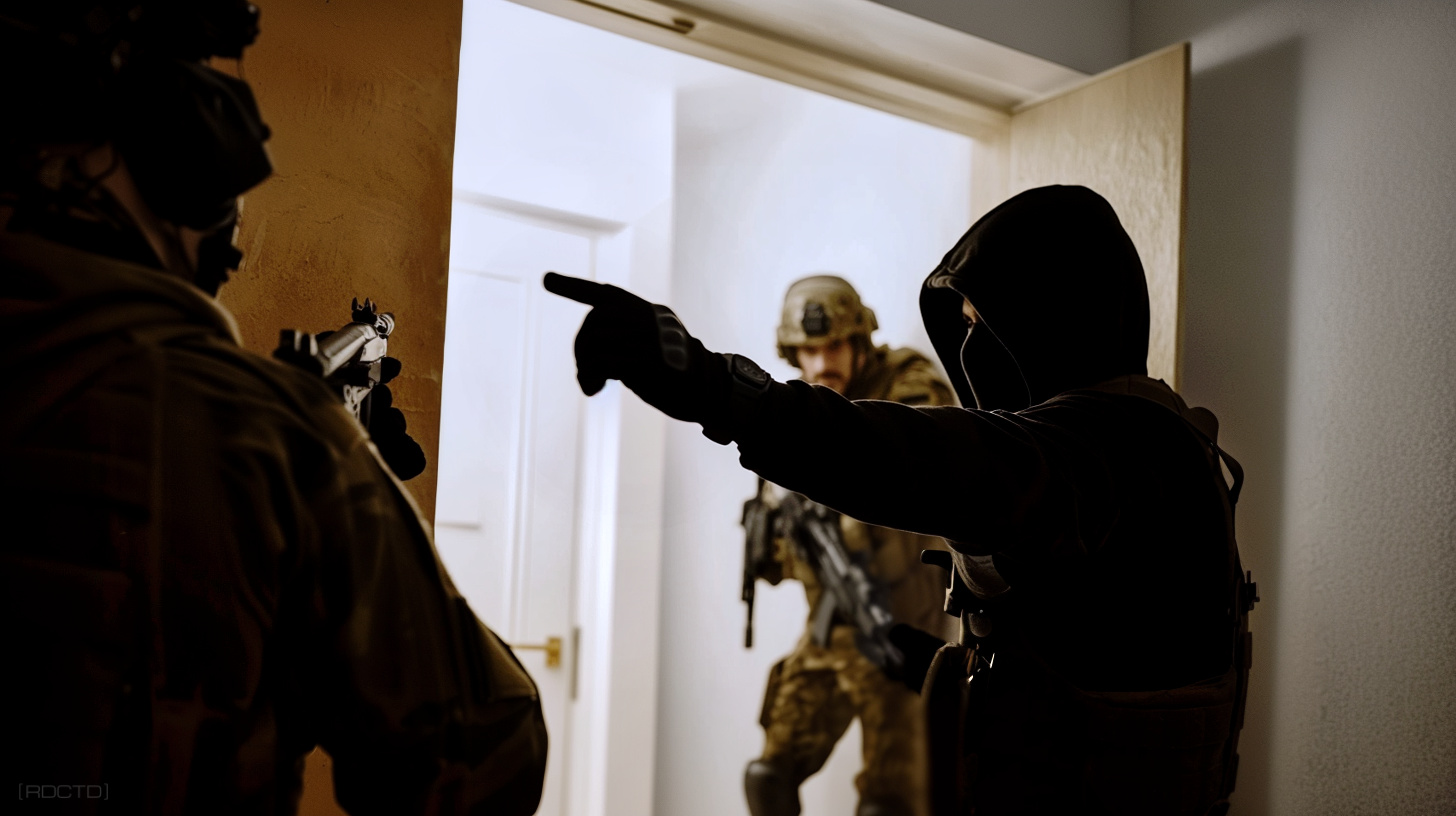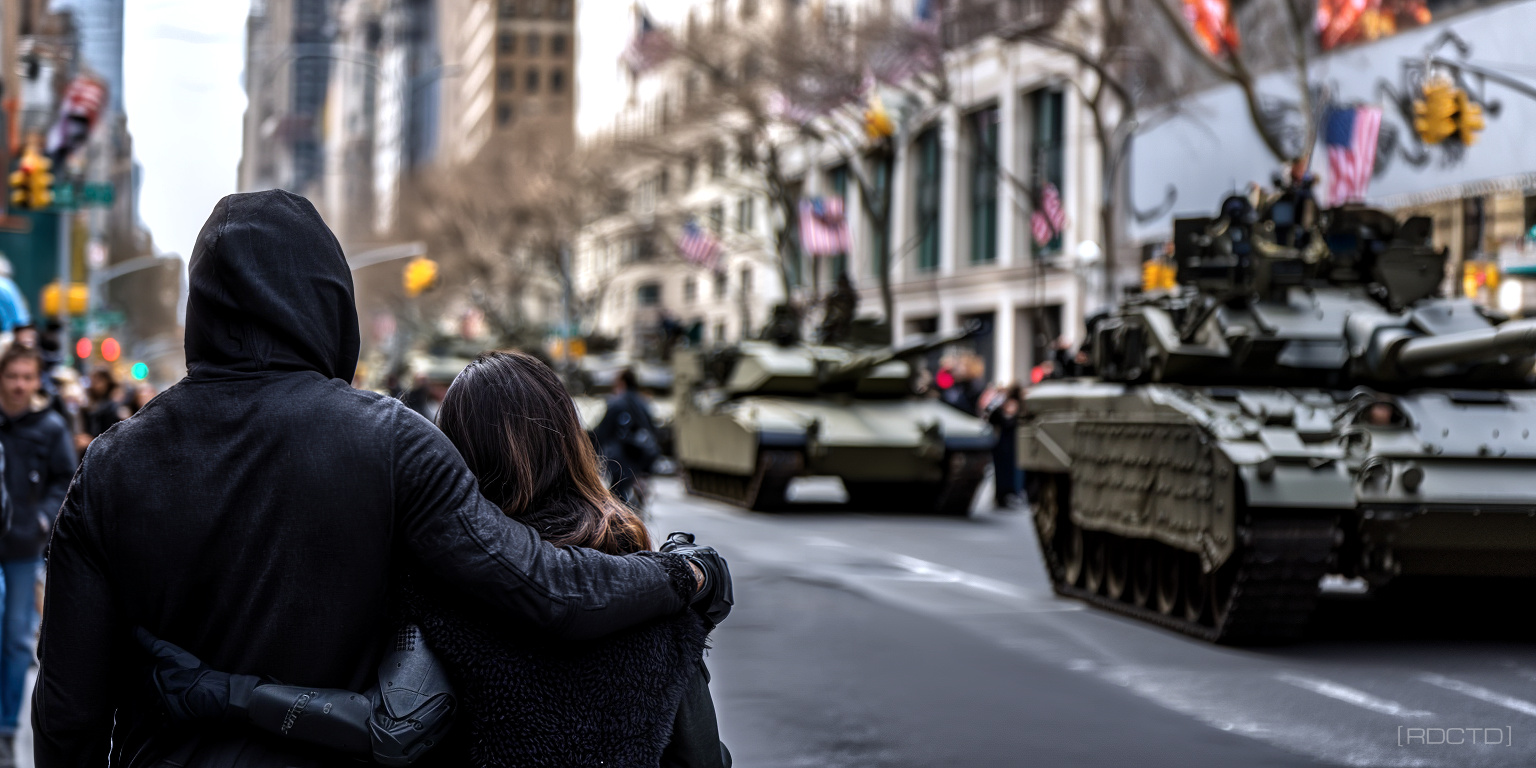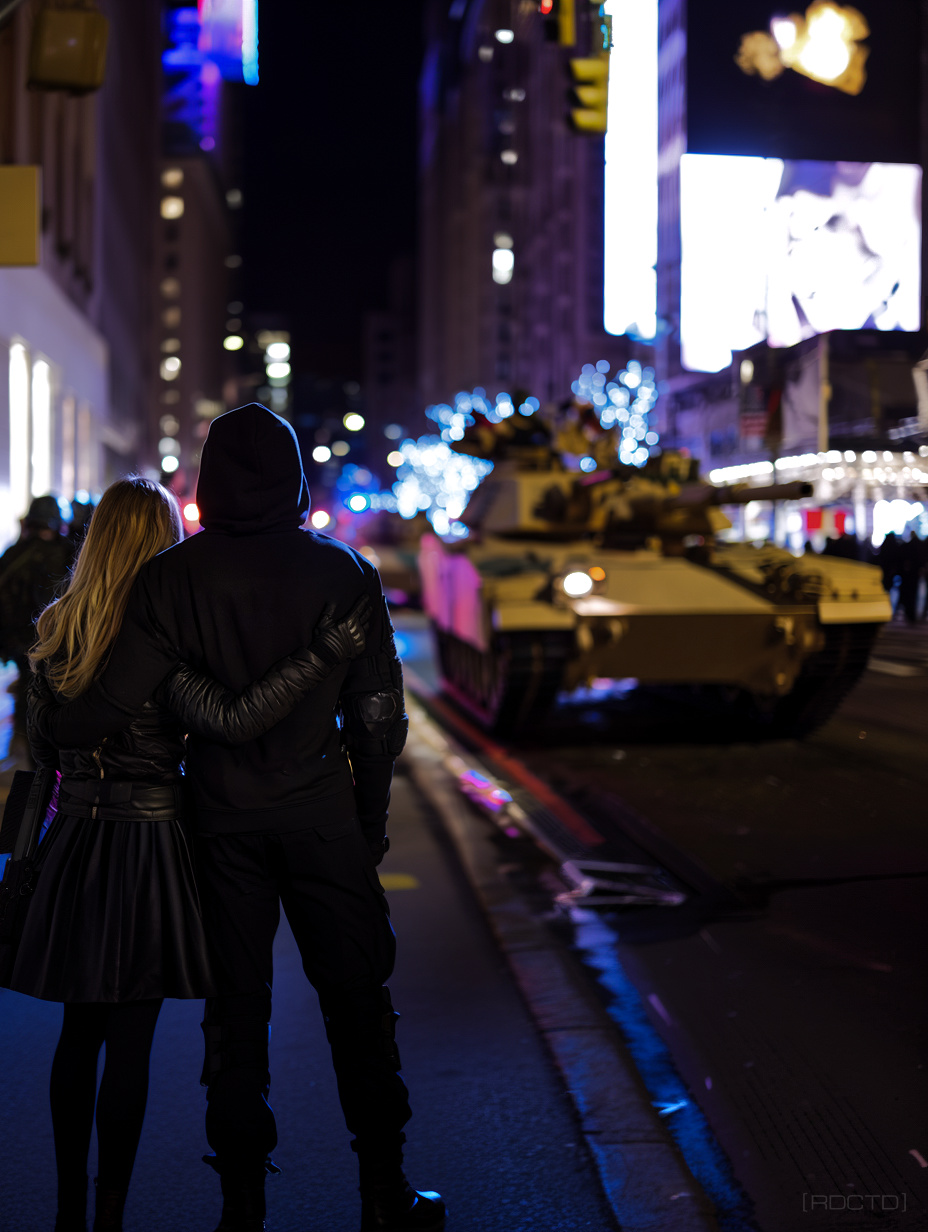 Martial law is the state in which the military replaces the governance of a city and control over civilian life. Requiring you to adapt movement, behavior, communication in the streets, and operate with tradecraft.
Martial law is the state in which the military replaces the governance of a city and control over civilian life. Requiring you to adapt movement, behavior, communication in the streets, and operate with tradecraft. The military during Martial law doesn’t just restrict movement, it rewrites the way the city breathes. If you don’t learn its new rhythm fast, you’ll always be moving against the current.
The imposition of direct military control over civilian functions during emergencies when civil authorities can’t maintain order. Triggered by large-scale unrest, natural disasters, foreign invasion, or political crises.
Under martial law, civilian authority is replaced or overridden by military command, often resulting in the suspension of constitutional rights, the enforcement of curfews, and the granting of broad powers to detain, search, and restrict movement. The military becomes the law of the land.
For a covert operative, this shifts the environment from one dominated by civilian law enforcement to one where heavily armed, higher numbering forces operate with fewer legal constraints and heightened authority.
![]()
Suspension of Rights
Freedom of movement, assembly, and sometimes speech or press may be restricted or removed entirely. This allows military authorities to prevent large gatherings, suppress dissent, and control the public narrative without legal challenge.
Curfew Enforcement
Civilian movement is limited to specific hours; violations may lead to immediate detention or harsher penalties. Curfews are often enforced with armed patrols, roadblocks, and the use of force against noncompliant individuals.
Expanded Search and Detention Powers
Security forces can search individuals, vehicles, and premises without standard legal warrants. This gives them broad authority to detain anyone they consider suspicious, often with little to no explanation.
Increased Checkpoints and Patrols
More frequent and visible security presence, often with fortified positions at key intersections and transport hubs. These positions serve both as control points and psychological deterrents to discourage civilian resistance.
Centralized Military Comman
Civilian governance is sidelined, with orders coming directly from military leadership, sometimes bypassing legal appeals. Decision-making becomes faster but also more unilateral, with little transparency or recourse.
Tighter Communication Control
Telecommunication, internet, and broadcast channels may be monitored, restricted, or shut down entirely. This ensures the military controls the flow of information, limiting coordination among civilians and operatives alike.
Altered Civilian Behavior
Public becomes more cautious, avoids gatherings, and adopts patterns to avoid conflict with security forces. These behavioral shifts can serve as early indicators of increased tension or upcoming enforcement actions.
![]()
In operational terms, martial law is a complete reset of the street environment. Civilian police tactics – predictable, legally bound, and often reactive – are replaced with proactive, high-discipline, military-tough enforcement.
This means more rigid security measures, faster adaptation to suspicious activity, and far less tolerance for deviation from the rules. An operative must adapt accordingly, prioritizing low visibility, simple and credible cover stories.
It’s also important to have an acute awareness of both the written rules and the unspoken street-level realities that emerge under military rule.
Use ‘Borrowed Authority’ // If you can, subtly associate yourself with an organization or group that has partial freedom of movement – humanitarian aid, utility services, or maintenance crews. Even without formal documentation, adopting their movement patterns and behavior can reduce unwanted stops.
[ INSIGHT ]
![]()
When martial law is declared, your immediate priority is to understand the new rules of movement and enforcement. Military checkpoints, ID inspections, and curfews can appear with little or no warning, fundamentally altering how you navigate the area.
Tracking the locations of these control points, as well as the rotation and shift patterns of troops, is essential. Since the military often operates on rigid patrol schedules but will adjust quickly if they detect suspicious activity.
If movement is unavoidable, always have a believable reason for being outside. Your ID should match your cover story, and you must be ready to present both confidently. In these conditions, security forces judge your composure as much as your documents. Hesitation, over-explaining, or visible anxiety draws more suspicion than simply being in the wrong place at the wrong time.
![]()
Curfew Enforcement
Map and update the position of military roadblocks, noting which times they’re most active. This allows you to plan routes that avoid unnecessary scrutiny and anticipate where patrols are likely to concentrate their resources. Maintaining an up-to-date mental or physical map can mean the difference between safe passage and detention.
Troop Shift Patterns
Identify when patrols rotate to exploit brief gaps in coverage. Military units often follow predictable routines, and knowing these moments of reduced vigilance can give you critical movement windows. Observing these patterns over time can also reveal when reinforcements or special units are brought in.
Curfew Awareness
Know exact restricted hours and adjust travel accordingly. Violating curfew can result in immediate arrest, fines, or worse, depending on the severity of enforcement. Planning movements well within allowed times prevents last-minute risks and the need for rushed travel.
Cover Story Preparedness
Have a reason for being outside that matches your identity, destination, and the items you’re carrying. A solid cover story should be simple enough to remember under stress but detailed enough to withstand casual questioning. Always rehearse it so you can deliver it confidently without hesitation.
Document Consistency
Ensure all carried identification supports your stated purpose and location. Discrepancies between your story and your papers are one of the fastest ways to raise suspicion. Double-check that dates, addresses, and affiliations on your documents align perfectly with your intended narrative.
Behavioral Control
Maintain calm body language, avoid unnecessary conversation, and refrain from showing fear or agitation. Soldiers and security personnel often judge intent by demeanor before they even check documents. Appearing relaxed and compliant reduces the likelihood of deeper inspection.
Pattern Avoidance
Vary your routes and times of travel to avoid creating a detectable movement pattern. Repeated behaviors can make you easy to track, even without formal surveillance. Unpredictable movement keeps both security forces and potential informants guessing about your intentions.
![]()
Mastering these factors allows you to move with minimal friction in a heavily controlled environment. In martial law conditions, normal living functioning, survival and operational success depend on precision.
This means knowing exactly where and when to move and presenting a credible front at all times. All the while keeping your actions so routine-looking that you fade into the background of military oversight.
Utilize ‘Shadow Timing’ // Move in the wake of legitimate activity. Follow utility workers, delivery trucks, or other personnel whose presence in restricted areas is considered normal. This creates a natural “cover wave” that masks your movement without you being directly associated with them.
[ LOGISTICS ]
![]()
Navigation during martial law demands a deliberate adjustment to your movement patterns. Main roads, intersections, and transportation hubs will almost certainly be under surveillance or direct guard – making them high-risk for unrestricted travel.
This often necessitates the use of indirect routes (secondary streets, service alleys, or even building interiors) to bypass heavily monitored areas. However, such avoidance must be subtle; appearing to intentionally evade main routes can trigger suspicion from watchful security forces.
Movement should be timed for moments when troops are distracted, such as during shift changes or when they’re engaged with unrest elsewhere. In some situations, moving within small groups can provide anonymity, but in unstable environments, gatherings can quickly become targets for dispersal or mass detention, so constant environmental scanning is essential.
![]()
Avoid Obvious Choke Points
Limit exposure at main roads, intersections, and key transit locations under direct guard. These areas are prime spots for ID checks, searches, and detentions, making them high-risk for operatives. Where possible, observe them from a distance before deciding whether to pass through.
Use Indirect Routes
Employ backstreets, service corridors, or building interiors to reduce visibility without appearing evasive. These routes can bypass military observation posts while still keeping you in plausible civilian areas. Choose paths that align with believable civilian movement patterns.
Maintain Plausibility
Blend your route choices with what an ordinary civilian might choose under similar conditions. If everyone is avoiding certain streets, you should too – unless you have a specific, credible reason not to. Plausibility ensures you don’t stand out to security patrols or informants.
Time Movements Strategically
Move during troop shift changes or when forces are occupied in other sectors. These windows of reduced attention are often short but can be enough for safe passage. Monitoring radio chatter, crowd behavior, or distant noise can help you identify such opportunities.
Crowd Utilization
Use small groups for concealment when safe, avoiding large gatherings that may attract security crackdowns. Blending with moving civilians can mask your presence, but large, static crowds are unpredictable and can turn into danger zones quickly. Always have an escape plan if a crowd is dispersed by force.
Situational Awareness
Continuously scan for patrols, sudden changes in troop behavior, or signs of incoming crowd control measures. Early detection allows you to adjust routes or hide before becoming trapped. Staying alert to small environmental cues can prevent being caught off guard.
Exit Planning
Always have multiple fallback routes in case your primary path becomes compromised. Roadblocks, protests, or sudden military sweeps can appear without warning. A mental or physical map of alternatives ensures you can adapt instantly under pressure.
![]()
Effectively navigating under martial law isn’t about constant avoidance but calculated presence. You must appear to move with the same logic as everyone else while quietly exploiting timing, geography, and human behavior to reduce the chance of unwanted interaction with military forces.
Layered Cover Story Elements // Have multiple harmless details that reinforce your presence: a small grocery bag, a receipt from a nearby shop, or a handwritten note with an address. Each item supports your narrative without relying solely on verbal explanation.
[ INTERACTION ]
![]()
Interaction with soldiers during martial law must be handled with control and awareness. The priority is to present a non-threat to the point of friendlessness.
Military personnel are operating under strict orders with heightened tension, which means their threshold for perceiving a threat (or problem / disruptive civilians) is lower than that of civilian police.
Debating legality or morality with them on the street is futile and dangerous. Such disputes, if ever even addressed officially, happen later in controlled environments where the military holds every advantage.
If your objective is to pass through without detention, limit your verbal interaction, keep your story short, and ensure it aligns perfectly with your identification and behavior. Complexity invites more questions, and more questions mean more time for suspicion to grow.
![]()
Visible Hands
Always keep hands in plain sight to signal non-aggression. Hidden hands can be interpreted as a threat, prompting heightened alertness or even force. Position your hands naturally, such as at your sides or holding documents where they can be easily seen.
Clear Speech
Speak directly and avoid slang or jargon that could be misunderstood. Military personnel often deal with multiple languages or dialects under stress, so clarity reduces the risk of confusion. Keep your tone steady and avoid over-explaining.
Immediate Compliance
Follow instructions without hesitation or visible resistance. Even brief delays can be read as defiance or concealment. Quick cooperation shortens the encounter and lowers the chance of escalation.
No Legal Arguments
Avoid challenging authority on the street; it escalates risk. Military enforcement under martial law operates outside normal civilian legal processes, and arguments rarely work in your favor. Save disputes for controlled environments if absolutely necessary.
Concise Cover Story
State your reason for movement in the fewest words possible. A short, consistent explanation leaves less room for contradictions or probing questions. The goal is to satisfy curiosity quickly without drawing additional attention.
Consistency
Ensure your ID, appearance, and story all match perfectly. Discrepancies between your documents and what you say are red flags that can lead to detainment or deeper searches. Double-check these details before leaving a safe location.
Calm Demeanor
Maintain steady body language and avoid sudden movements. Anxiety, fidgeting, or abrupt gestures can raise suspicion even if you’ve done nothing wrong. Controlled breathing and deliberate motions help project calm compliance.
End Interaction Quickly
The longer the exchange, the greater the risk of further questioning or search. Once the security personnel appear satisfied, disengage politely and move on without lingering. Lingering invites unnecessary reevaluation of your presence.
![]()
Best practices for these standard interactions comes down to controlling the pace and direction of the encounter. You want the security forces to process you as unremarkable and quickly move on to the next person, leaving you free to continue your movement with minimal friction or exposure.
Leverage Psychological Momentum // Once you’ve passed one checkpoint successfully, you often have a short “momentum window” where downstream security assumes you’ve already been vetted. Use this period for your most sensitive movement before your trail cools and suspicion resets.
[ ASSETS ]
![]()
Under martial law, the military’s mission is to impose order and maintain control, which means their presence is both a challenge and an opportunity for an operative.
While soldiers are trained to follow orders, they remain human – susceptible to boredom, stress, personal needs, and grievances. These vulnerabilities can be exploited and used to your advantage.
The purpose and benefit of cultivating soldiers as assets lies in the access they can provide: restricted movement corridors, checkpoint schedules, or controlled supplies such as fuel, food, contraband, or ammunition.
This process isn’t about converting them into loyal allies instantly, but to gradually developing them into reliable sources of timely and specific intelligence. Initial contact should be low-risk and minor favors, before moving toward discreet exchanges of information for items or help they value.
![]()
Turning Soldiers Into Assets:
![]()
A soldier-turned-asset can provide operational advantages far beyond what direct surveillance or infiltration could achieve – with much less difficulty and risk. The key is to keep the relationship quiet, beneficial to both sides, and adaptable to the shifting pressures of a martial law environment.
Map the ‘Invisible Terrain’ // Alongside physical maps, keep mental notes on environmental features: blind corners, reflective windows for discreet observation, overhanging balconies for concealment, and side doors that bypass monitored entrances. This terrain becomes invaluable when evasion is required.
[ COMMS ]
![]()
Controlling information is as critical as controlling your movements. Communication networks may be restricted or actively monitored. Meaning careless messages can compromise you and the contact.
Secure communications must be kept brief, encoded if possible, and transmitted at irregular intervals to avoid creating predictable patterns.
You should always operate under the assumption that surveillance (physical and electronic) is heavier than you can detect. Success in such an environment depends on lowering your profile, anticipating security force movements, and avoiding unnecessary interactions or visibility.
The operative must understand the ebb and flow of the street and the people in it. Knowing when tension is building, when patrols relax, and when civilians alter their behavior. That’s how you move through martial law conditions without attracting the wrong attention or any attention at all.
![]()
Assume Heavy Surveillance
Work as if every action and message is being monitored. This mindset keeps you disciplined in both movement and communication, reducing the risk of complacency. By defaulting to a “watched at all times” approach, you’ll naturally avoid careless mistakes.
Use Secure Channels
Encrypt or encode communications wherever possible. Even basic code systems can frustrate casual monitoring and buy time before messages are understood. Choose methods appropriate for the environment’s technological level and the urgency of the message.
Keep Messages Short
Limit content to essential details only. Brevity leaves less for adversaries to interpret or exploit if intercepted. Long messages invite attention and increase the odds of revealing patterns or sensitive information.
Irregular Transmission
Send communications at unpredictable times to avoid pattern tracking. If your contact knows to expect messages only at certain intervals, you’re easier to predict and intercept. Varying timing keeps adversaries guessing and prevents them from setting traps.
Profile Reduction
Blend into the environment physically and behaviorally to avoid scrutiny. Clothing, movement, and demeanor should match the prevailing mood of the street. The less memorable you are, the harder you are to track.
Predict Patrol Patterns
Identify when and where security forces are most and least active. Understanding these rhythms allows you to plan movements with the lowest likelihood of confrontation. Observing for multiple days strengthens accuracy and reliability of these predictions.
Read Civilian Cues
Observe shifts in public behavior to anticipate trouble or changing conditions. Sudden evacuations, shuttered businesses, or an unusual quiet can signal impending enforcement actions. Civilians often sense danger before official signs appear.
Avoid Unnecessary Contact
Reduce the number of people you interact with to limit exposure. Each interaction increases the chance of leaks, misunderstandings, or betrayal. Keeping your circle tight preserves both operational security and personal safety.
![]()
The control of what you transmit and when you move ensures that you’re avoiding detection and managing your presence so effectively that you become nearly invisible in a heavily controlled, high-risk environment.
Relationships Are Assets // In martial law, even casual acquaintances—a shopkeeper, street vendor, or janitor—can become lifelines for information, shelter, or cover. Treat every human contact as potentially valuable without making them feel “used.”
[ FINAL ]
![]()
Operating and living in a city under martial law is a strategic practice in precision, discipline, and adaptation.
Every movement, interaction, and message must be intentional, with your presence carefully calibrated to match the environment while avoiding patterns that invite scrutiny.
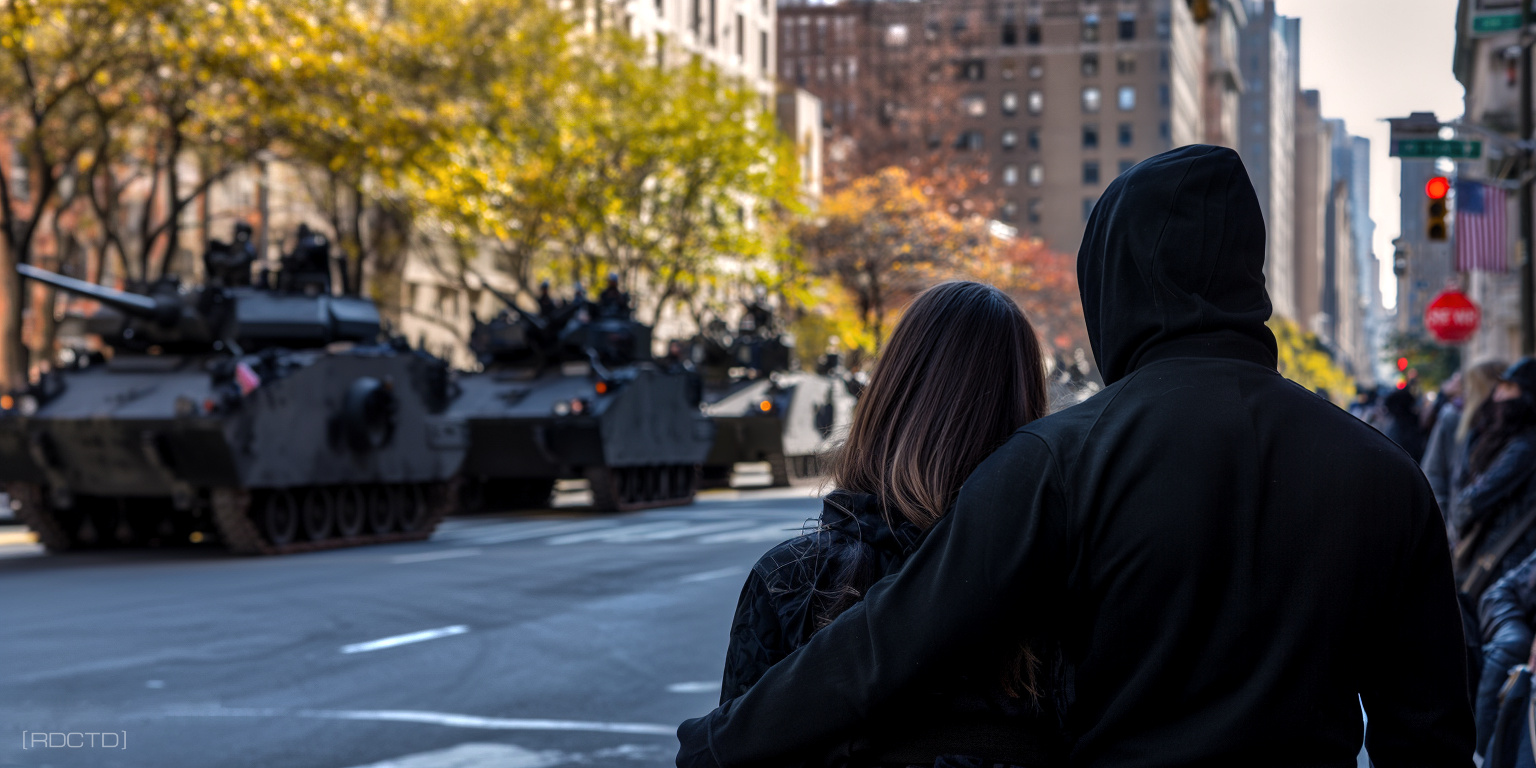 By understanding the military’s rhythms, exploiting opportune moments, and managing both physical and information signatures, an operative can move, operate, and even influence within a city under the tightest control. Remaining effective while staying one step ahead of enforcement.
By understanding the military’s rhythms, exploiting opportune moments, and managing both physical and information signatures, an operative can move, operate, and even influence within a city under the tightest control. Remaining effective while staying one step ahead of enforcement.
![]()
// Soldiers have orders, but they also have moods, habits, and blind spots. Learning those is how you operate with more options.
[INFO : Active Security Zone Mapping]
[TAG : Martial Law Survival Guide]
![[RDCTD]](https://rdctd.pro/wp-content/uploads/RDCTD-Covert-Operative-Tradecraft-Guide-LOGO-tk.png)
![[RDCTD]](https://rdctd.pro/wp-content/uploads/RDCTD-Covert-Operative-Tradecraft-Guide-LOGO-mobile.png)
